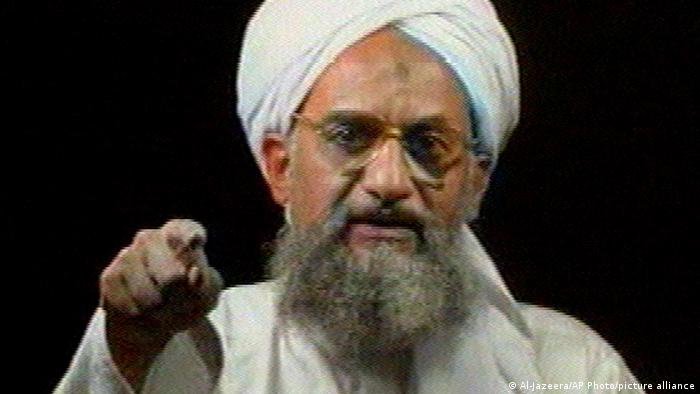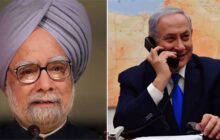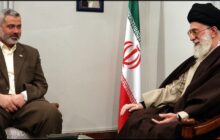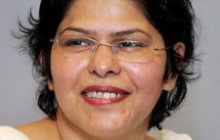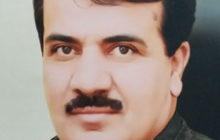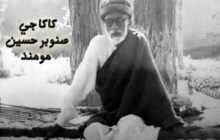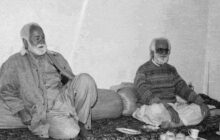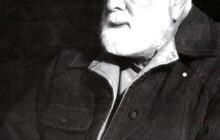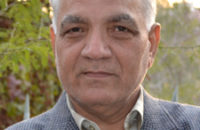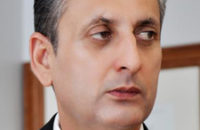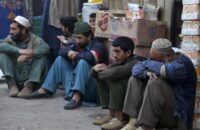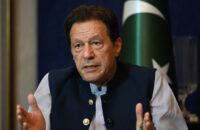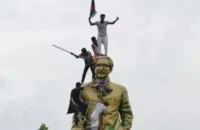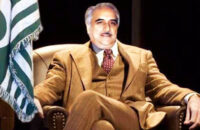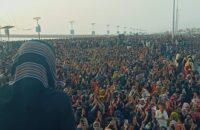Khaled Ahmed
On the first of August 2022, a US drone attack killed the leader of Al Qaeda, Ayman al-Zawahiri, in Kabul in Afghanistan. US President came on TV to say that Zawahiri had “carved a trail of murder and violence against American citizens. Now justice has been delivered and this terrorist leader is no more. Zawahiri was on the balcony of a safe house when the drone fired two missiles at him. Zawahiri had taken over Al Qaeda after the death of Osama bin Laden in 2011. He and Bin Laden plotted the 9/11 attacks together and he was one of the US’s “most wanted terrorists”. He was living in a safe house provided by the most powerful militia in Afghanistan known as the Haqqani group.
The ideological base of Al Qaeda
Zawahiri was the ideological brains behind al-Qaeda. An Egyptian doctor who was imprisoned in the 1980s for involvement in militant Islam and was imprisoned in the wake of the assassination of Egyptian present Anwar Sadat. He left the country on his release and became involved in violent international jihadist movements. He eventually settled in Afghanistan and joined forces with a rich Saudi, Osama Bin Laden. Together they declared war on the US and organized the 11 September 2001 attacks in New York. Whoever informed the US on his whereabouts is to collect $25 million for the information.
Zawahiri’s death in a CIA drone strike raises questions about whether he was being given sanctuary by the Taliban following their takeover of Kabul in August 2021 after the US troops left Afghanistan ending their 20 years of war. US officials said that senior members of the Taliban were aware of Zawahiri’s presence in Kabul. President Bide said Zawahiri had “carved a trail of murder and violence against American citizens. Now justice has been delivered and this terrorist leader is no more”.
Al Zawahiri: his own story
Al Zawahiri’s book Knights under the Banner of the Prophet, written at Tora Bora in Afghanistan in 2001, and an attempt to disclose Al Zawahiri’s own deviations from views held at earlier points of time. The book is interesting in the sense that it lifts the veil from the way the Islamists in Egypt conduct themselves, the extent of their insulation from the ‘free’ society of Egypt (and the consequent outlandishness of their brand of Islam) and indirectly the stamp Al Zawahiri’s domination of Al Qaeda left over the jihadi outfits of Pakistan.
Al Zawahiri came from a privileged family of doctors aligned with an equally privileged family of scholars and lawyers on his mother’s side, the Azzams. Himself a qualified physician. (He was to acquire a PhD in surgery later from a Pakistani medical university while living in Peshawar). He was inspired by the Quranic exegesis of Syed Qutb and was able to radicalise its message even further by applying violence to end the jahiliyya or Muslim societies not living under Shariah. Al Zayyat wants to prove that Al Zawahiri was violent right from the start and that he became hardline after he moved to Afghanistan.
The watershed event was the assassination of President Sadat in 1981 by Gama’a and an alliance of extremist outfits called Islamic Jihad. Hundreds of activists of both were imprisoned. Al Zawahiri was tortured till he betrayed his closest recruit in the Egyptian army Al Qamari, an act that would shape his later career through contrition. Zayyat was in jail from the side of Gama’a whose founder Shawqi Al Islamboli had his brother Khaled Al Islamboli operating on the side of the jihadis organised in part by young Al Zawahiri. The mother of the Islamboli brothers took active part in jihadi politics, unlike the family of Al Zawahiri.
Toughness concealed by soft speech
Earlier when Gama’a Islamiyya had chosen Sheikh Omar Abdul Rehman as its leader, Al Zawahiri had protested saying the Shariah did not allow a blind man to be the imam of an organisation. This was an early sign of toughness from an otherwise soft-spoken and self-effacing Al Zawahiri, an attribute that continued to arouse deep loyalty among the warriors that followed him. Al Zawahiri left Egypt because it was too ‘free’ a society for his ideas to spread without being critiqued in its free press. He first went to Saudi Arabia and joined Abdul Aziz University Jedda to be with two intellectual giants of jihad, Muhammad Qutb – the brother of Syed Qutb – and Abdullah Azzam, the inspiring Palestinian thinker. Al Zawahiri had already visited Afghanistan after the war there in 1980 and had worked at Seyyeda Zainab Hospital in Peshawar run by the Ikhwan. He was imprisoned for the assassination of Sadat in 1981 on his return, for three years; he came back to Afghanistan in 1986.
In Afghanistan (with a free run of Pakistan) he had to marry his plan of terrorism against Egypt with Osama bin Laden’s money and his wider confrontation. (Al Zawahiri called America the ‘far enemy’; but the ‘near enemy’, Egypt, had to be attacked first.) But Abdullah Azzam was already on top of things in Peshawar. Some writers have suggested that Al Zawahiri had Azzam and his two sons murdered in Peshawar in 1989 to get the full attention of Osama bin Laden. This book comes even closer to proving that he had a hand in it.
It quotes a Gama’a member having an argument with Al Zawahiri on the streets of Peshawar in the course of which Al Zawahiri accused Azzam of being an ‘agent’ because he had good relations with Gama’a. He attended the funeral of the ‘imam of the mujahideen’ the next day! Azzam taught at Islamabad’s International Islamic University where he also met Najmuddin Feraj alias Mulla Krekar the Kurd, because of whom Turkey went through a bad patch of relations with Pakistan. (Mulla Krekar is being investigated in Sweden. Sixteen of his Ansarul Islam Kurd terrorists were caught in Bursa, Turkey, on 3 May 2004, planning to blow up a NATO meeting the following month.)
More extreme than the Egyptian clerics
Al Zawahiri attacked not only Gama’a for becoming quiescent after the 1997 massacre at Luxor, he had earlier attacked the Ikhwan in his book The Bitter Harvest for giving up violence. He held to his view that Egypt had to be attacked because that was where the West had to be fought first. Sitting in Peshawar he repeatedly tried to assassinate Egyptian ministers and civil servants suspected of persecuting the Islamists. His recruits narrowly missed two government figures in Cairo but killed one informer. He had accused the Egyptian Islamists of randomness but they accused him of randomness when he tried to destroy the Egyptian embassy in Islamabad in 1995, succeeding only partially. He was however more successful fulfilling Osama bin Laden’s agenda against the Americans after the setting up of Al Qaeda in 1998, when he blew up the US embassies in Nairobi (partially) and Dar-us-Salam (unsuccessfully) followed by more successful hits in Yemen and Al Khobar.
Al Zawahiri and bin Laden had to leave Afghanistan in 1994 for Sudan because of the infighting among the Afghan mujahideen during the presidency of Rabbani, and returned in 1996 after striking a deal with Mulla Umar after his Taliban had established almost total control over Afghanistan. Pakistan was on the side of the Taliban and was weaned from it only after 9/11. It had also expressed its inability to make the Taliban expel Osama bin Laden to the Clinton administration. Al Zawahiri accepted the tough Islam of the Taliban even though it would not sit well with the Islamists of Egypt who were liberal with regard to women. The Taliban accepted an ‘Arabised’ radicalisation of their projection of ideological power into Pakistan because they got bin Laden’s money in addition to the assistance they got from Islamabad. It was Pakistan that inserted itself into the Taliban-Al Qaeda nutcracker because of its own ISI-led internal transformation.
The Haqqanis and Pakistan
Arab scholars accused Al Qaeda and especially Al Zawahiri of causing great harm to the Islamist cause. In violation of past practice, Al Zawahiri and Osama bin Laden would not own up to acts of terrorism till the 9/11 incident when both came on TV to only hint at having done it. The author thinks that Al Zawahiri miscalculated the American response after 9/11. He thought it would be like the attacks after the African cases, that is, bombing of Afghanistan. But a full-fledged invasion of Afghanistan under a Security Council resolution under Chapter 7 damaged the Islamist cause beyond repair. He focuses only on the Arabs who had settled in Afghanistan with their families and were now killed or taken prisoner.
Al Zawahiri was living in a safe house provided by the Haqqani group. In Pakistan’s “Afghan war”, the Haqqanis were the “adopted” warriors. General Hamid Gul (1936-2015) was Director-General of the Inter-Services Intelligence (ISI) between 1987 and 1989, and “handled” the Haqqani network. Under the Kerry-Lugar Act of the aid-giving United States, Pakistan was supposed to act against “the terrorist pockets within its boundaries and against non-state actors it had used in the past and some of whom had now turned against it and were killing innocent Pakistanis”. In 2009, ex-ISI boss Hamid Gul, in an interview to London’s Arab journal Asharq Al-Awsat, had explained his personal allegiance to the Afghan warriors “fighting to avenge what took place in Pakistan following the 9/11attacks”. He added that he had sent his two sons to jihad along with the Afghan jihadi leader Jalaluddin Haqqani.
Al Zawahiri’s ‘protectors’
The Haqqanis dominate the Taliban government of Afghanistan. Jalaluddin Haqqani was the founder of the Network named after him. His tribal connections, fundraising skills, and fluency in Arabic were key assets in his ascension. His Zadran tribe is located on the Afghan-Pakistani border between Loya Paktia and Pakistan’s Waziristan. He drew Gulf money and Arab fighters to the anti-Soviet Afghan jihad, even taking an Arab wife from the United Arab Emirates with whom he had a son, Sirajuddin. This link also formed the foundation of the Haqqani Network’s relationship with the Arabs of Al Qaeda and Islamic State-Khorasan. Sirajuddin Haqqani is today the most powerful man in the Taliban government as minister of interior. Another person from the clan, Khalilur Rehman Haqqani, is the Minister of Refugees.
During Al Zawahiri’s sojourn in Pakistan in the protection of the Haqqanis, the American press often said that Pakistan’s ISI was linked with the Haqqanis who were embedded in the Al Qaeda shura, with one Haqqani carrying $5 million American money on his head. Pakistan was apparently happy with the Haqqani network and its local ally Hafiz Gul Bahadur because they did not mess with Pakistani forces fighting the Tehreek Taliban Pakistan (TTP). The TTP turned “bad” only in 2009; before that Pakistan was in the coalition against terrorism without any real commitment to fighting the Taliban and Al Qaeda, the latter belonging to Pakistan’s large baggage of denial. The policy as it stood was one-sided and ignored the American side of the bargain.
♠

